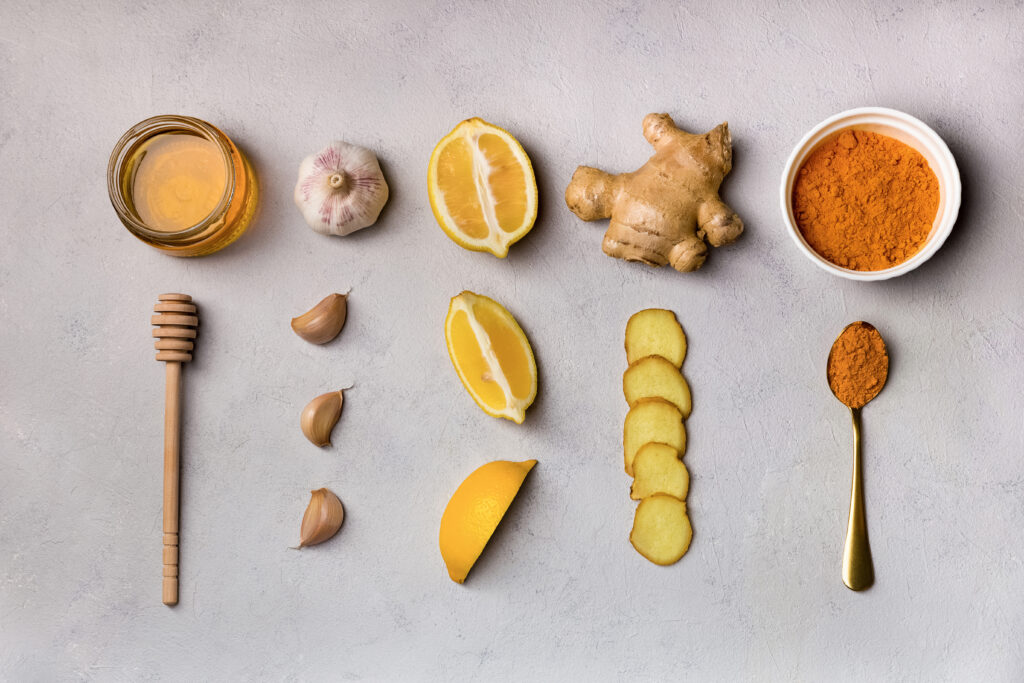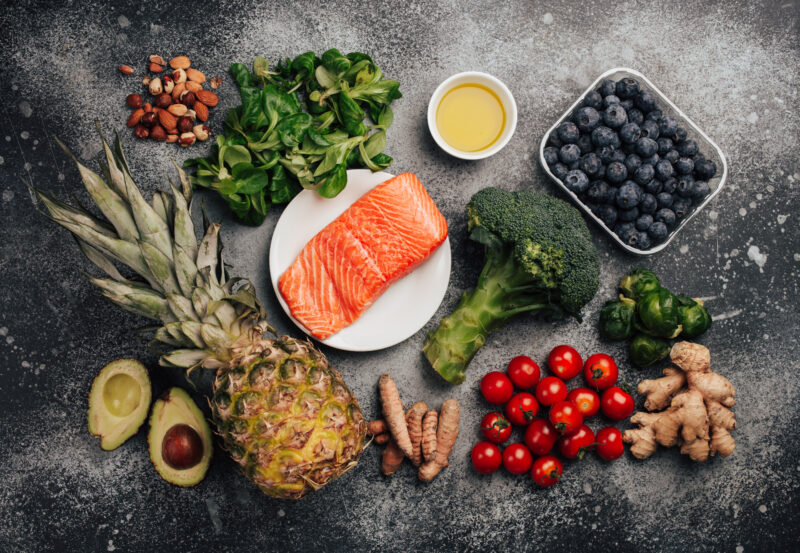Inflammation is your body’s natural response to injury, infection or foreign substances such as plant pollen or chemicals. Anything from a needle prick while mending a button or a bout of the flu to exposure to pollen in your yard can trigger your body’s inflammatory response. During this response, the body increases white blood cells either to the area of injury (needle prick) or systemically, as with the flu or allergies. These white blood cells fight off the foreign invaders to protect your health.
While acute inflammation is healthy, chronic inflammation has negative health consequences. Think of your body as a car and inflammation as the car’s engine: Your car must have an engine for the automobile to function. But if an engine lacks coolant and runs too hot for too long, it overheats (chronic inflammation) andthe car breaks down. Such is the case with inflammation: We need inflammation to survive, but if we have too much chronic inflammation, our bodies break down.
When inflammation is chronic, the immune system attacks healthy tissues instead of foreign invaders. This can lead to heart disease, arthritis, diabetes, depression and even Alzheimer’s disease.
Dr. Barry Sears, the best-selling author of The Zone, writes, “We often make medicine more complex than it actually is. That’s because the underlying cause of chronic disease is increased inflammation. What we see as heart disease, cancer and Alzheimer’s are not different diseases but simply different manifestations of long-term damage caused by a continued inflammatory attack on your organs.”
Science also points to the fact that the process of aging itself increases levels of chronic inflammation. This chronic low-grade inflammation is called “inflammaging.” As we age, we accumulate exposure to environmental toxins, stress, alcohol, bad foods and chronic diseases. This accumulated exposure – combined with the natural age-related regression in immune functioning – makes older adults especially vulnerable to inflammation.

Benefits of reducing inflammation
The good news is that lifestyle changes can reverse the damage caused by inflammation and reduce chronic inflammation in general, delivering many benefits:
- More energy
- Absence of muscle aches and joint pain
- Better digestion
- Healthy weight loss
- Fewer headaches
- Improved skin health
- Better mood and mental health
Cooling the engine: Our diet and chronic inflammation
Just as a car engine needs coolant to avoid overheating, we need anti-inflammatory agents to “cool” or reduce chronic inflammation.
As doctors and researchers learn more about inflammation, it has become increasingly apparent we can find the most effective inflammation-fighting tools in an unexpected place: the refrigerator.
Food plays a pivotal role in inflammation levels in our body. Some foods increase inflammation, while other foods protect us from it.

Foods that increase inflammation
Generally speaking, processed foods with artificial ingredients increase inflammation, as Dwight Lundell, MD, a heart surgeon and founder of Healthy Humans Foundation, explains:
“There is no escaping the fact that the more we consume prepared and processed foods, the more we trip the inflammation switch little by little each day. The human body cannot process, nor was it designed to consume, foods packed with sugars and soaked in omega-6 oils.”
The following food types increase inflammation:
Added sugars – Added sugars increase the flavor and shelf life of commercial food products. Not to be confused with natural sugars – those found in fruits, vegetables and whole grains – added sugars increase inflammation. However, they’re tricky to find on a nutrition label because many labels combine both natural and added sugars, making it difficult to determine the actual amount of added sugars.
- Look for words ending in “ose” (e.g., sucrose or maltose). These are added sugars
- Also avoid:
- High fructose corn syrup
- Molasses
- Cane sugar
- Corn sweetener
- Raw sugar
- Syrup
- Honey
- Fruit juice concentrates
Refined carbohydrates – Proper serving sizes of the right kind of carbohydrates are healthy for you. After all, carbohydrates are the most efficient form of energy for our bodies. However, refined carbohydrates increase inflammation. A carbohydrate becomes “refined” when most of the nutrients and fiber have been removed. This makes them quick to digest, which increases their glycemic index. And eating foods with a high glycemic index can cause your blood sugar and insulin levels to spike as well as rapidly increase inflammation.
- Foods high in refined carbohydrates:
- White rice
- White potatoes
- Pasta
- White bread
- Sugary breakfast cereal
- Instant oatmeal
- Potato chips
- Pastries
- Donuts
Saturated and trans fats – Saturated fats are solid at room temperature. Common sources include:
- Red meat
- Bacon
- Whole milk and other whole-milk dairy foods
- Cheese
- Coconut oil
- Commercially prepared baked goods
- Fried foods
- Trans fats also occur naturally in red meat and dairy products, as well as the following:
- Fried foods
- Margarine, shortening or lard
- Non-dairy coffee creamer
- Meat and dairy

Using food to fight back: Healthy anti-inflammatory foods
Berried treasure: Anti-Inflammatory fruits
The following berries are rich in inflammation-fighting antioxidants like anthocyanins and catechins:
- Strawberries
- Blueberries
- Raspberries
- Blackberries
Un-beet-lievable: Anti-Inflammatory vegetables
Beets are one of the best anti-inflammatory foods, and cruciferous vegetables are also especially adept at fighting inflammation. These include food like:
- Broccoli
- Cauliflower
- Brussels sprouts
- Bok choy
Spice things up: Anti-inflammatory spices and herbs
Spices and herbs can have an anti-inflammatory effect and also add antioxidants to your food. Examples include:
- Turmeric
- Curry powder
- Garlic
- Ginger
Go nuts! Inflammation-fighting nuts
Nuts include omega-3 fatty acids, fiber, L-arginine and magnesium—chemicals that carry a powerful anti-inflammatory punch. Crushed nuts sprinkled on top of chicken or fish adds flavor, and nut butter on an apple is always a tasty treat. Healthy nuts include:
- Walnuts
- Cashews
- Almonds
- Pistachios
Go fish!
Fish contain omega-3 fatty acids, which can block the production of inflammation in the body. Experts recommend eating a 3- to 6-ounce serving of fatty fish two to four times a week (fresh or canned). These include fish like:
- Salmon
- Mackerel
- Sardines
Oh kale yes!
Leafy greens like kale contain alpha-linolenic acid, which is an omega-3 fat known for its anti-inflammatory benefits. They also contain significant concentrations of other anti-inflammatory vitamins and nutrients such as vitamin A, vitamin D, vitamin E and vitamin K. Anti-inflammatory leafy greens include:
- Kale
- Spinach
- Chard
- Arugula
- Endive
- Turnip greens
- Beet greens
- Collard greens

| Chronic inflammation doesn’t have to be an inevitable part of aging. Simple, healthy changes to your loved one’s diet can ensure they are fully empowered to live their best lives to their fullest extent. We hope the suggestions above are helpful in your caretaking journey. |

